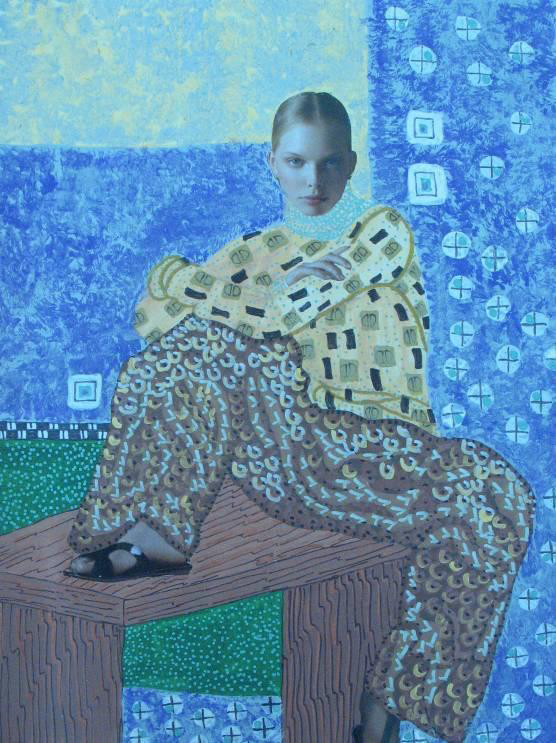Target Grade:
Middle and High School; although an Elementary School teacher adapted it using paper doll images for younger students.
Learning Objectives:
Students will study the work of Gustav Klimt in the context of the Vienna Secession Movement and contemporary issues of repatriation of Nazi confiscated art. Students will explore pattern and texture in a mixed media collage painting.
Essential Understandings:
Students will understand the role of pattern and texture in the course of art production and their concept of beauty.
Students will comprehend the Vienna Secession Movement as a part of the Arts and Crafts Movement.
Students will understand the implication of the Nazi confiscation of art in today’s world.
National Standards:
1.0 Students will perceive and respond to works of Gustav Klimt and use the vocabulary of the visual arts to express their observations.
2.0 Students will apply artistic processes and skills using the techniques of mixed media collage to communicate the meaning and intent in mixed media collages, incorporating pattern and texture.3.0 Students will understand the historical contributions and cultural dimensions of the Vienna Secession Movement and the contemporary issues of repatriation of Nazi confiscated art.
4.0 Students will respond to, analyze and make judgments about the work of Gustav Klimt and their own work.
Purpose:
Students will use realistically rendered features to express likenesses of their subjects. Students will view and examine works of Roman sculptors. Students will create a sculptural product.
Vocabulary:
Pattern,Texture, ViennaSecessionMovement Repeat, RepeatDesignArtNouveauMovement Texture, Actual Texture,ImpliedTexture,Nazi
Flat PicturePlane, Repatriation, Antiquities, Commission,Commissioned
Materials:
large magazine photos of figures or student generated photographs;Opaque White
Pens Or Correction Fluid

#22-091412 ct. Pointed Tip Student Scissors Best Pack
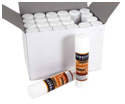
#22-1403 8 g. Washable Glue Stick box
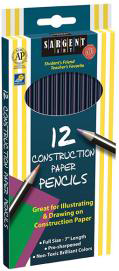
#22-7209 Construction Paper Pencils
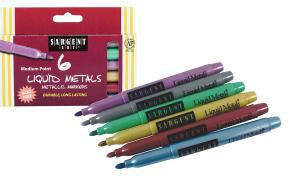
#22-1506 Metallic Medium Point Peggable Carton Markers
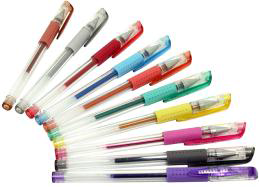
#22-1501 Glitter Gel Pens

#66-80XX Sargent Art Watercolor Liquid Metals

#24-2499Acrylic Paints

#22-1565 4ct. Black Fine Tip Markers
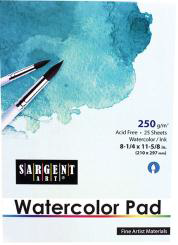
#23-5026 25 sheet Watercolor pad
Time:
Approximately two weeks of 45 minute class periods.
Introduction and Motivation:
- Students will study the work and context of Gustav Klimt and explore pattern and texture in a mixed media collagepainting.
Important: Use only referenced websites and teacher approved images. Klimt’s work can be too mature for the classroom so students should not be allowed to research ontheir own. - Research referenced websites to see a variety of work by Gustav Klimt ifavailable.
- Research Greek, Roman, Japanese, and Egyptian antiquities for repeat patterns and textures.
- Read the biography of Gustav Klimt using reading prompt if website notavailable.
- Discuss the role of Gustav Klimt in the Vienna Secession Movement and inthe repatriation of his artwork to the heirs and the value of those artworks in today’s market.
- Discuss the reproductions of Gustav Klimt and how he used pattern and texture ina flat pictureplane.
- Discuss real and actual texture withexamples.
Procedure:
- Students draw several examples ofpatterns.
- Students draw several examples oftextures.
- Students paint several examples of patterns and textures using a varietyof materials.
- Students write an assessment rubric using Klimt’s work as a basis with the help of theteacher.
- Students select desired figure from magazine pages. (Teacher should tear out a selection of pages ahead of time from which students may select—it saves time.)
- Students carefully cut out head and all flesh areas offigure.
- Using the left over picture, students trace over the outline edges of the figure on drawing or watercolor paper.
- Students glue flesh on background paper using light outlines asguides.
- Students lightly sketch outline of the clothing, making changes to enhancethe flat quality of the overall design. Sketch at least three backgrounddivisions.
- Students begin applying chosen media to create patterns, working from the back to the front of thedesign.
- Students fill in negative space with metallic paint or markers. Metallicpaint may also be splattered or added astexture.
- Students write a creative piece about the person in the painting. It could be a biography, a poem, a story. Why was the paintingcommissioned?
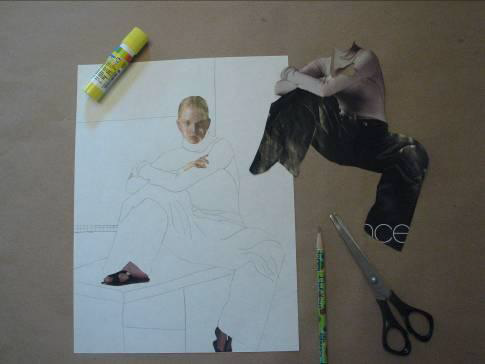
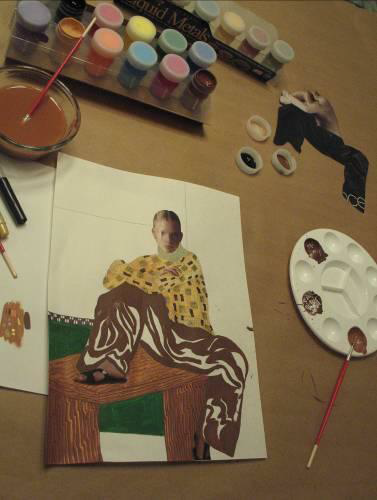
Assessment and/or Evaluation:
Students create a title for their artwork and write an artist’s statement.
Students check their work against the rubric.
Students pair/share to discuss their work and self-evaluate.
The work is scored by the teacher using the assessment rubric created at the beginning of the artwork.
Resources:
http://en.wikipedia.org/wiki/gustavklimt
http://www.artchive.com/gustavklimt
http://www.iklimt.com
http://www.ibiblio.org
http://www.expo-klimt.com/
Stephan Koja. Gustav Klimt: A Painted Fairy Tale. Prestel Verlag. New York. 2007
Gustav Klimt, The Kiss
Portrait of Adele Block-Bauer I
Portrait of Emilie Flöge
Venola, Penelope. School Arts Magazine “Passion for Pattern.” January 2012



